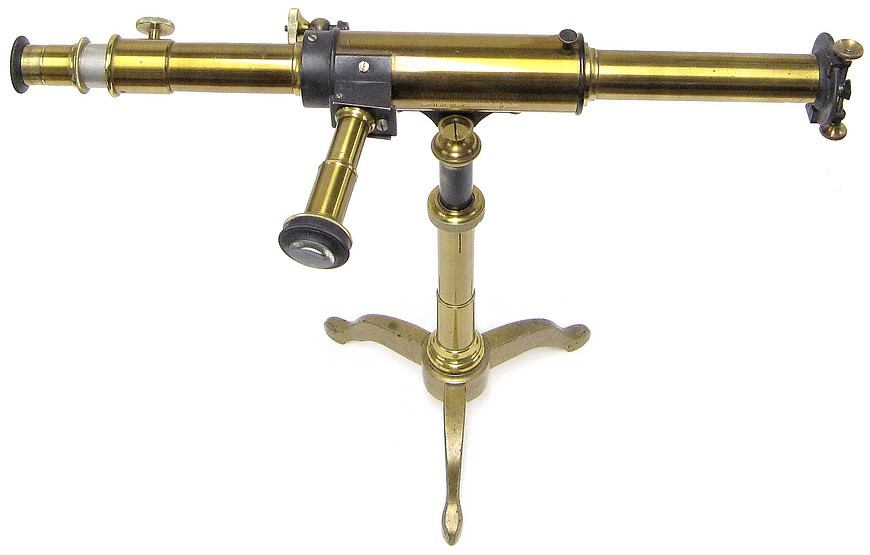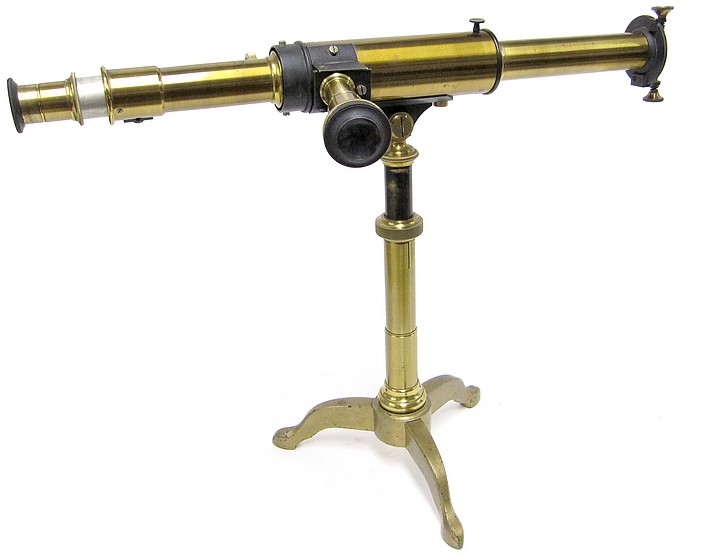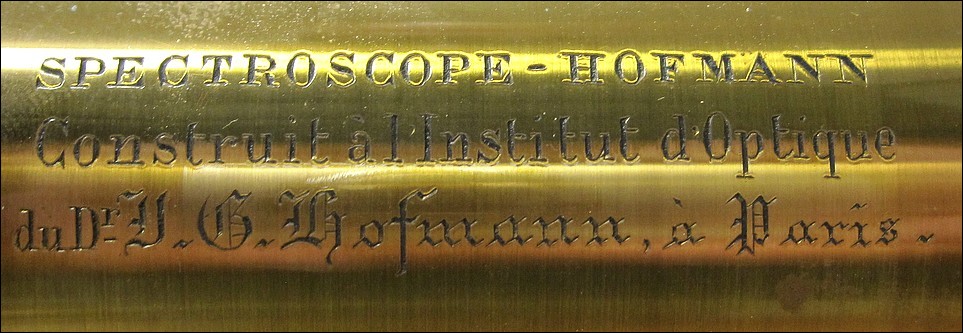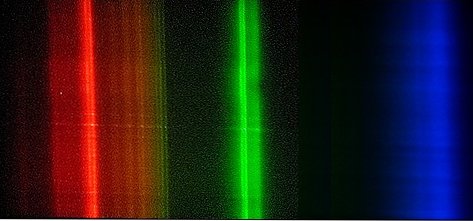



Dr. J. G. Hofmann, originally of German extraction, established a business in Paris as an optical and philosophical instrument maker. The firm was active between the years 1850-1875 trading at rue de Bucy. Later (1863-1875), the firm was referred to as l' Institute d' Optique Paris.
This type of direct vision spectroscope was first introduced by Hofmann in 1862. It utilizes a series of five prisms cemented together consisting of two different types of glass (crown and flint) having differing indices of refraction. With the example shown here, the spectrum is focused by rack and pinion and there is a mechanism that alters the angle of the telescope relative to the prisms which allows it to focus on different parts of the spectrum. There is an accessory telescope at a near right angle to the main tube that projects a wave length scale onto the spectrum. In addition, there is a mechanism in front of the slits that allows the use of a small comparison prism. Later, other manufacturers copied this Hofmann design. One such instrument by Franz Schmidt & Haensch, Berlin is represented in this collection.

The following was extracted from the Reports of the United States Commissioners to the Paris Universal Exposition, 1867, Vol. 3
The most convenient form of spectroscope for ordinary uses is the direct-vision spectroscope, in which the dispersion is effected by prisms contained within the tube of the observing telescope itself, as in the case of Amici's pocket spectroscope mentioned above. Tbe Abbe Moigno, in his journal Les Mondes, states that Jansen was the first to design a spectroscope in this form, which seems not to have essentially differed in principle from that of Amici, but which was considerably more powerful. In the instrument of Amici the ray, after having been dispersed by one prism, is brought by reflection into its original direction, the dispersion remaining. In Jansen's, a second pair of prisms is placed immediately behind the first, which is in all respects similar to that. The effect is therefore to double the dispersion.
A form of the instrument superior to either of these has been contrived by Hoffmann, of Paris, the very able constructor to whose skill the investigators of the higher optics have been so much indebted, and who has furnished to Father Secchi and to Mr. Huggins the instruments which have enabled them to prosecute so successfully the spectral analysis of stellar and nebular light. In Mr. Hoffmann's direct-vision spectroscope, the apparatus for dispersion consists of five prisms, three of crown glass and two of flint glass, cemented together into one system with their refracting angles alternately in opposite directions. Tbe arrangement resembles that of the group of letters AVAVA, in which the cross-line of the letters A indicates the path of the light through the system. The dispersion is differential, the angles of the prisms being so chosen as to compensate the mean refraction; and the mean ray emerges parallel to the direction of incidence. But as the extreme rays of the spectrum produced by the dispersion are necessarily not parallel to the same direction, the tube is jointed at a point just behind the system of prisms, and the part near the eye has a liberty of lateral motion sufficient to enable the observer to bring any portion of the spectrum into the field of vision. The angles actually given to the several prisms at their summits are ninety degrees for the two flint-glass prisms, represented in the group of letters above by the two Vs, and also for the central prism of crown glass. The angles of the extreme crownglass prisms are only sixty-nine degrees.


Spectrum of a compact fluorescent lamp as seen through the spectroscope